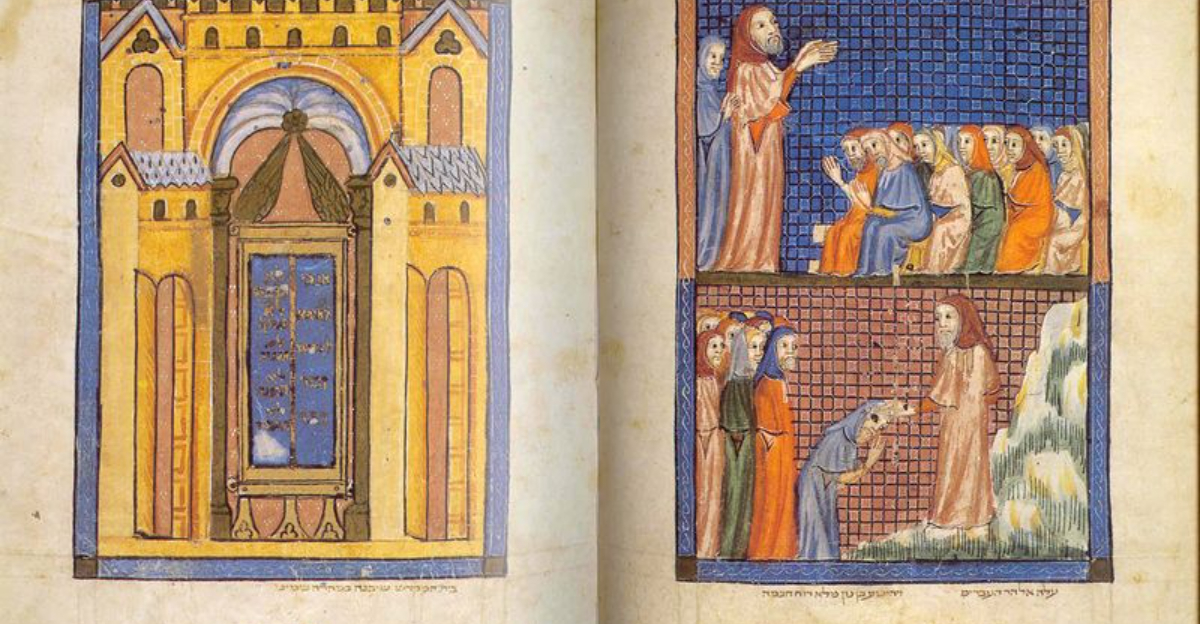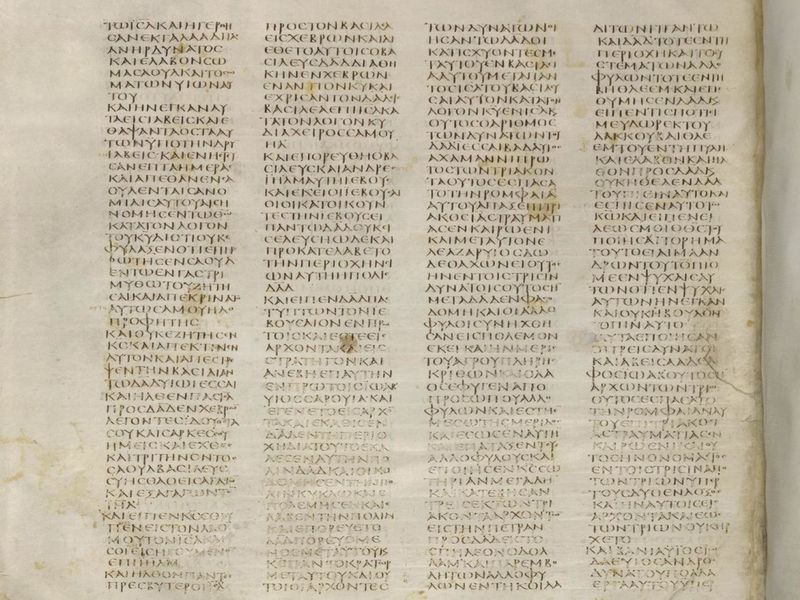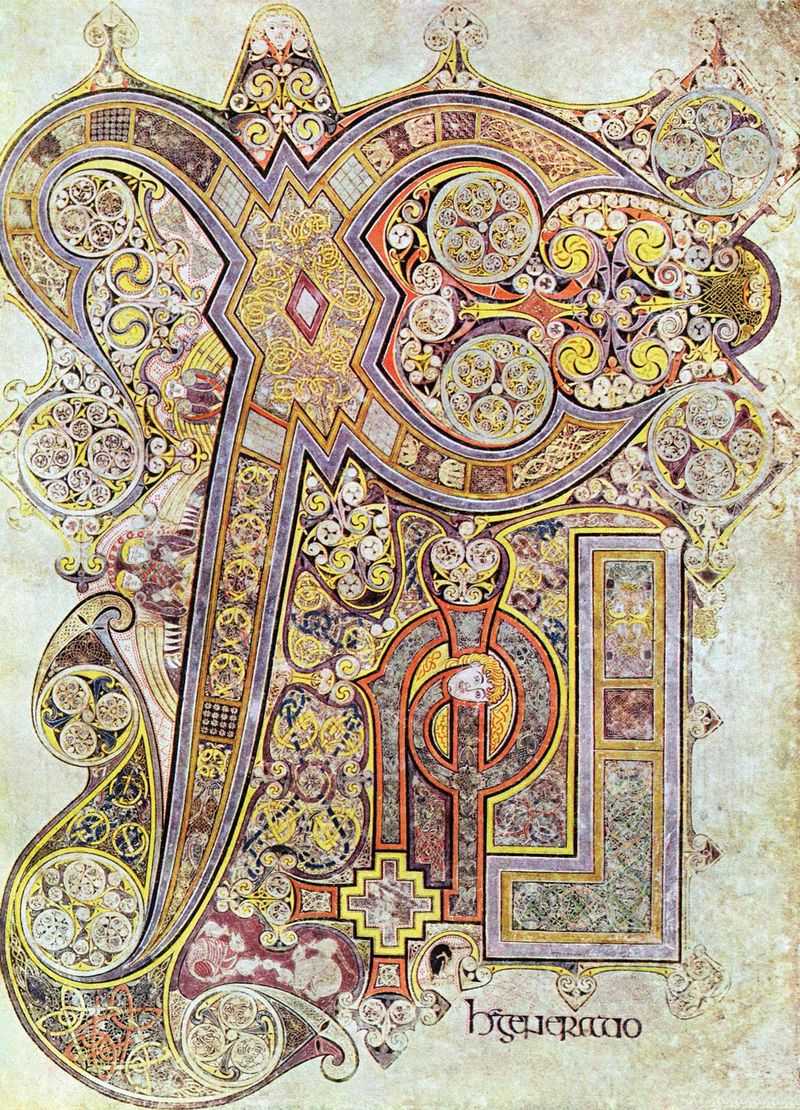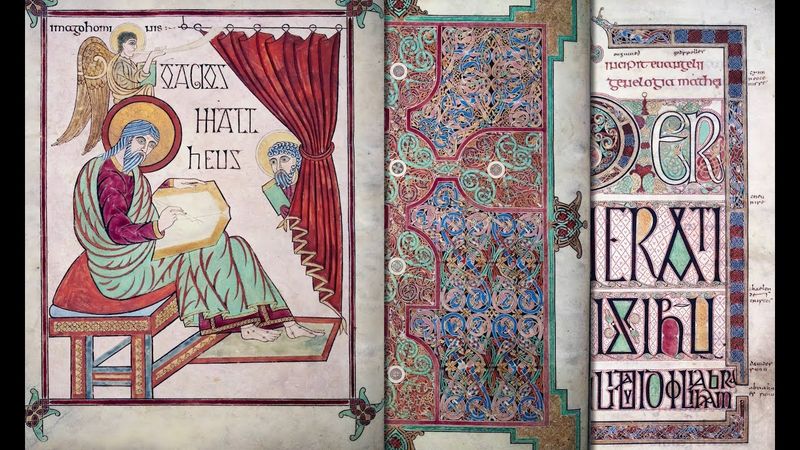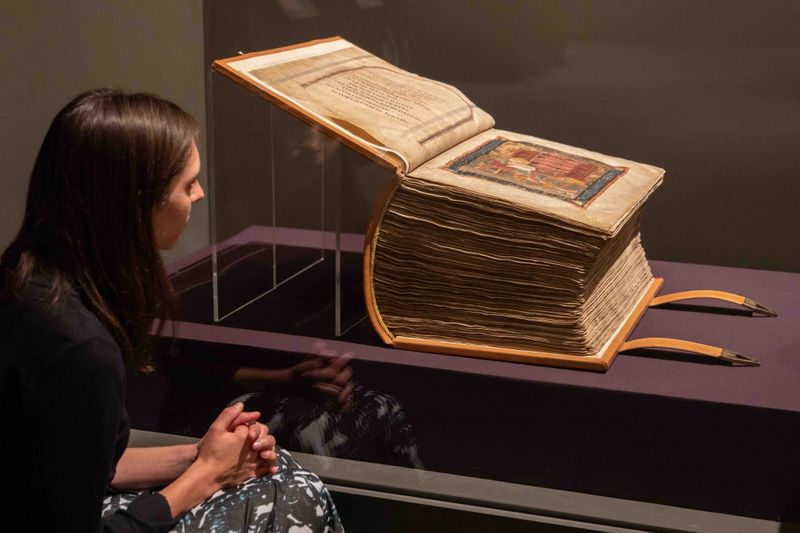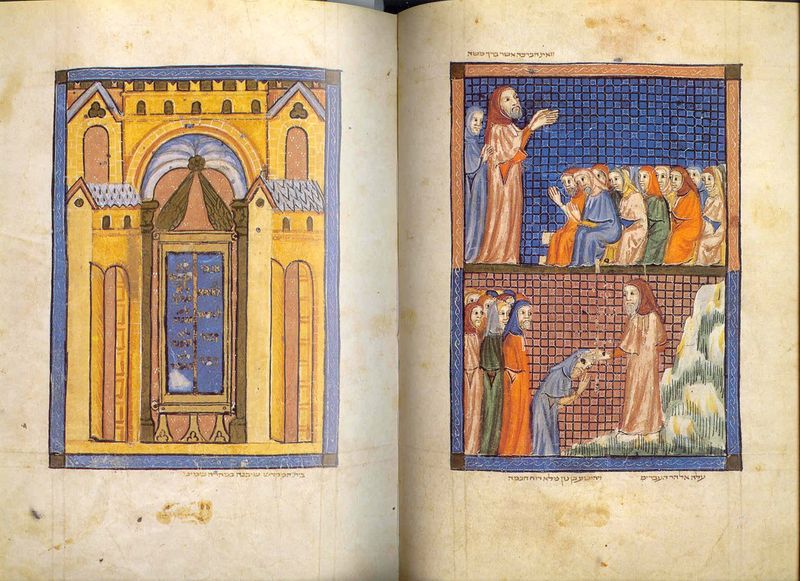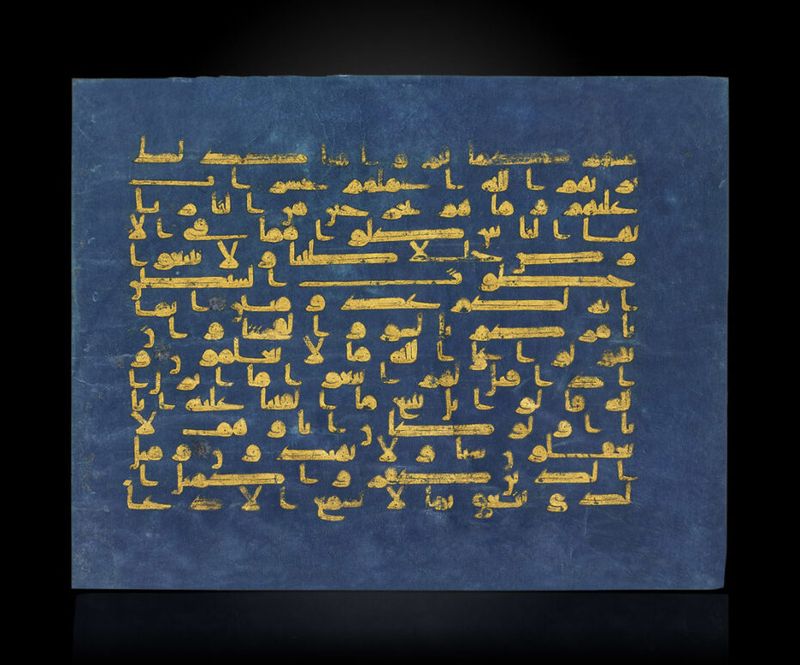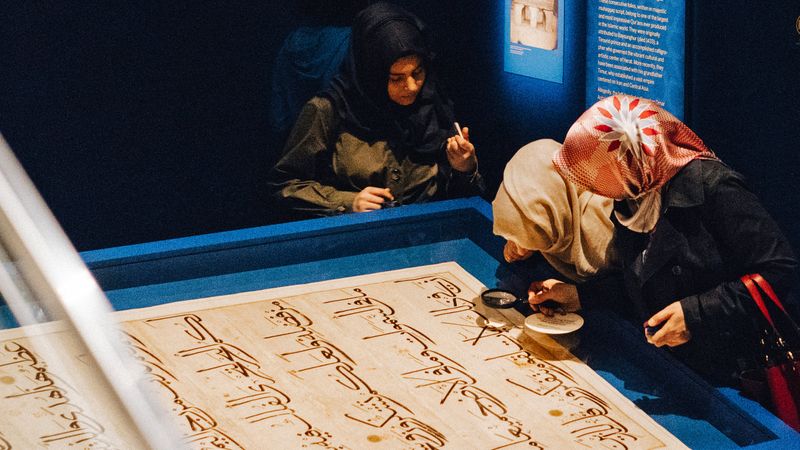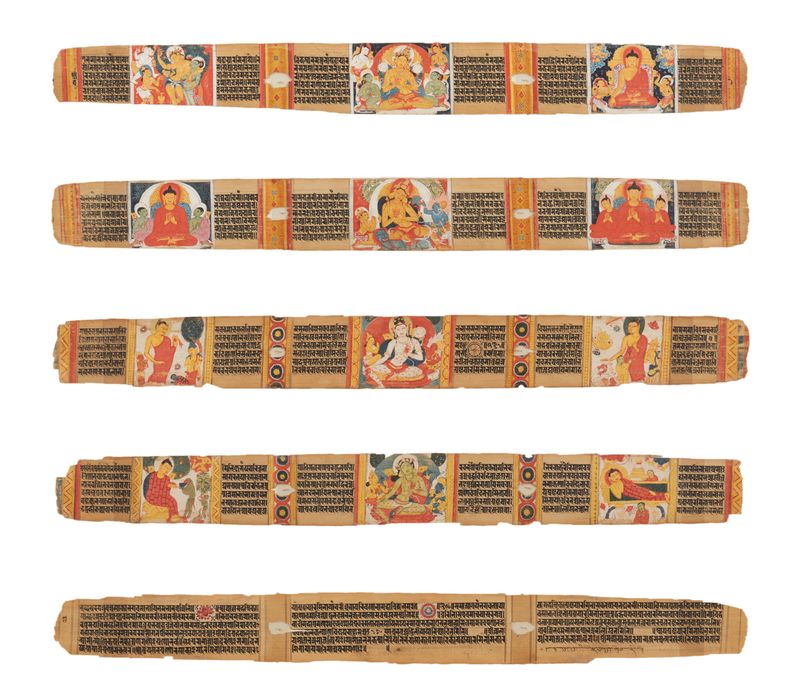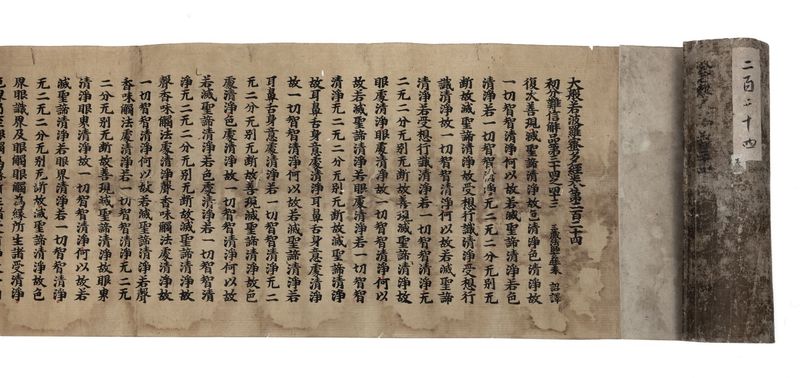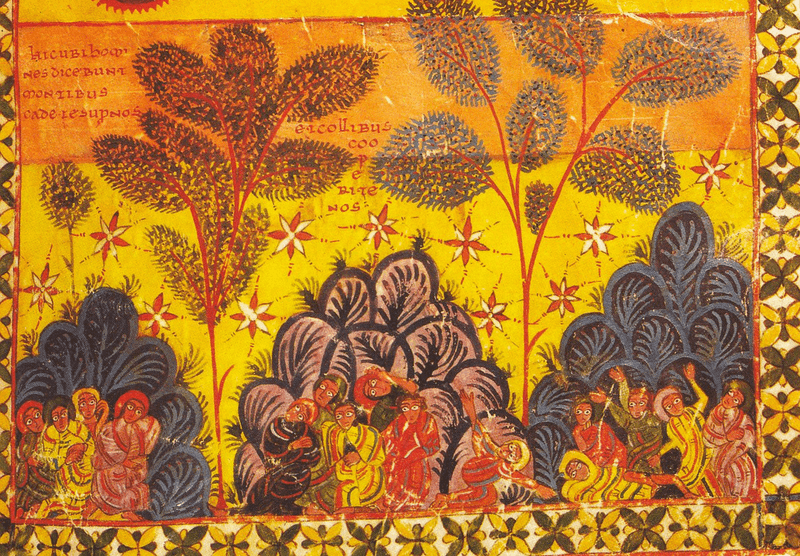Throughout history, illuminated manuscripts have served as a testament to human creativity and devotion. These beautifully crafted documents not only offer insights into religious practices but also reflect the artistic endeavors of different cultures.
Here, we explore sixteen of the oldest and most breathtaking illuminated religious manuscripts that have survived the test of time, each unique in its artistry and historical significance.
1. Codex Sinaiticus (Egypt/Sinai, c. 330–360 CE)
Codex Sinaiticus is one of the earliest complete Bibles, written in Greek during the 4th century CE. Its preservation is remarkable, allowing us to glimpse into early Christian texts. The manuscript is noted for its elegant uncial script, providing a distinct visual appeal. It symbolizes a significant phase in the history of biblical transcription. Interestingly, it was discovered at Saint Catherine’s Monastery in Sinai. This monumental find has become an essential source for biblical scholars and historians. A testament to ancient craftsmanship, it continues to fascinate with its timeless allure.
2. Codex Vaticanus (Rome, c. 300–325 CE)
The Codex Vaticanus, one of the oldest surviving manuscripts of the Greek Bible, is revered for its simplicity in design but profound historical importance. Dating back to the early 4th century, it provides a near-complete version of the Christian scriptures. Its existence offers a crucial glimpse into the textual transmission of the Bible. Housed in the Vatican Library, it reflects the meticulous craftsmanship of its time. Despite its unadorned appearance, the manuscript’s significance is immeasurable, as it continues to be a central piece for theological studies.
3. Book of Kells (Ireland, c. 800 CE)
The Book of Kells, crafted in 9th century Ireland, stands as a crowning achievement of Insular illumination. Its pages are adorned with intricate Celtic knots and vibrant hues, embodying the artistic flair of its creators. The manuscript contains the four Gospels, richly decorated with imagery that captures the imagination. Its craftsmanship represents a fusion of Christian iconography and native artistic traditions. Often displayed at Trinity College Dublin, the Book of Kells remains a symbol of Ireland’s rich cultural heritage, attracting scholars and tourists alike.
4. Lindisfarne Gospels (England, c. 715 CE)
The Lindisfarne Gospels, crafted by the monks of Lindisfarne Priory, showcase a mesmerizing fusion of Anglo-Saxon and Celtic art. Created around 715 CE, the manuscript is famed for its ornate carpet pages. These pages are filled with intricate geometric patterns and vivid colors, reflecting a blend of religious devotion and artistic innovation. The manuscript serves as an extraordinary example of early medieval artistry. Its preservation offers insights into the cultural and spiritual life of its time, making it a cherished artifact of England’s historical legacy.
5. Codex Amiatinus (England, c. 700 CE)
Codex Amiatinus is the earliest complete Latin Vulgate Bible, produced in England during the 8th century. This monumental manuscript is revered for its beautifully scripted text. Its sheer size and meticulous craftsmanship make it a remarkable artifact of early Christian literature. Originally intended as a gift to the Pope, it symbolizes the dedication to religious scholarship of its creators. Today, it stands as a testament to the intellectual and spiritual efforts of medieval monks, offering insights into the spread of Christianity across Europe.
6. The Sarajevo Haggadah (Spain, c. 1350 CE)
The Sarajevo Haggadah, a stunning 14th-century illuminated Jewish manuscript, is a symbol of resilience and cultural unity. Created in medieval Spain, it features vibrant biblical scenes and survived centuries of exile. Remarkably, it was saved twice by Muslims—first from the Nazis by Derviš Korkut, a Muslim librarian who hid it during WWII, and again during the Bosnian War. Today, it resides in Sarajevo’s National Museum, a treasured reminder of interfaith courage and shared humanity.
7. The Golden Haggadah (Spain, c. 1320 CE)
The Golden Haggadah, crafted in early 14th century Spain, is a treasure of Sephardic art. It contains 56 miniatures, lavishly detailed with gold leaf, narrating the story of the Exodus. Each page is a masterpiece, reflecting the cultural and religious vibrancy of pre-Inquisition Jewish life. The manuscript’s artistry provides insights into the devotional practices of its time. Preserved in the British Library, it remains a testament to the enduring legacy of Jewish illuminated manuscripts, captivating scholars and art enthusiasts with its intricate beauty.
8. Kennicott Bible (Spain, 1476 CE)
The Kennicott Bible, completed in 1476 in La Coruña, Spain, is renowned for its lavish decoration, combining Islamic and Gothic motifs. Created for a wealthy Jewish patron, the manuscript is an exquisite example of Hebrew illumination. Its pages are filled with colorful illustrations and intricate designs, reflecting cultural exchanges between Jewish and Islamic artistic traditions. The manuscript stands as a symbol of the flourishing Jewish intellectual and artistic life in medieval Spain. Today, it is a celebrated piece of art history, fascinating researchers and art lovers alike.
9. Blue Qur’an (North Africa, c. 9th–10th Century CE)
The Blue Qur’an, originating from North Africa during the Fatimid era, is distinguished by its gold Kufic script on indigo-dyed parchment. This exquisite manuscript exemplifies the artistic achievements of Islamic calligraphy and bookmaking. Its bold color scheme and elegant script create a striking visual contrast. The manuscript’s opulent appearance reflects the cultural and religious richness of its time. Preserved in various collections, it continues to be admired for its unique beauty and craftsmanship, offering insights into the artistic traditions of early Islamic societies.
10. Topkapi Manuscript (Iraq, c. early 8th Century CE)
The Topkapi Manuscript, one of the oldest surviving Qur’ans, hails from early 8th century Iraq. Handwritten on parchment, its elegant Kufic script is a testament to the artistry of early Islamic scribes. The manuscript’s preservation offers invaluable insights into the textual traditions of Islam. Housed in the Topkapi Palace Museum, it continues to be a subject of admiration and study. Its existence underscores the religious and cultural heritage of the Islamic world, reflecting the spiritual devotion and artistic dedication of its creators.
11. Timurid Qur’ans (e.g., Baysunghur Qur’an) (Persia, 15th Century CE)
Timurid Qur’ans, such as the Baysunghur Qur’an from 15th century Persia, are masterpieces of Persian illumination. These manuscripts are renowned for their geometric floral borders and vibrant color palette. The artistry reflects the Timurid dynasty’s patronage of the arts and dedication to religious scholarship. Each page is a visual celebration of Islamic calligraphy and design. Preserved in various collections, these manuscripts continue to inspire admiration and scholarly interest. They embody the rich cultural and artistic legacy of the Timurid period, showcasing a unique fusion of aesthetics and spirituality.
12. Prajñāpāramitā Sutra (Astasahasrika) (India, 7th Century CE)
The Prajñāpāramitā Sutra, an illustrated palm-leaf manuscript from 7th century India, is a revered Buddhist text. Part of the Gilgit Buddhist texts, its pages are adorned with intricate drawings in gold and ink. The manuscript embodies the spiritual and artistic traditions of ancient India. Its illustrations provide insights into the iconography of early Buddhist art. Preserved in various collections, it continues to be a subject of scholarly interest and admiration, symbolizing the intersection of religious devotion and artistic creativity in ancient Buddhism.
13. Perfection of Wisdom Sutra (Japan, 8th Century CE)
The Perfection of Wisdom Sutra, part of Japan’s Hyakumantō Darani project, is an 8th century Buddhist text. Some copies were hand-illuminated, showcasing the intricate artistry of Japanese scribes. The project aimed to print a million charms, reflecting the religious zeal of its time. The manuscript’s illustrations offer a glimpse into the spiritual and artistic life of early Japan. Preserved in various collections, it remains a testament to the fusion of religious devotion and artistic skill, attracting admiration from scholars and art enthusiasts worldwide.
14. Bhagavata Purana Illustrated Manuscripts (India, 15th–17th Century CE)
The Bhagavata Purana Illustrated Manuscripts, created between the 15th and 17th centuries in India, are celebrated for their stunning narrative scenes of Krishna’s life. Painted in Rajput and Pahari styles, these manuscripts capture the vibrant cultural and artistic traditions of their time. Each illustration reflects the devotion and creativity of its creators. Preserved in various collections, they offer insights into the religious and artistic life of medieval India. These manuscripts continue to captivate with their vivid imagery and spiritual depth, symbolizing a profound connection between art and devotion.
15. Morgan Beatus (Beatus of Liébana) (Spain, 10th Century CE)
The Morgan Beatus, also known as the Beatus of Liébana, is a 10th century Spanish apocalypse manuscript. It is famed for blending Christian iconography with Islamic-influenced design. The manuscript’s vivid colors and surreal imagery create a unique visual narrative. Each illustration reflects the complex interplay between religious and artistic traditions of medieval Spain. Preserved in the Morgan Library & Museum, it continues to fascinate scholars and art enthusiasts. The manuscript symbolizes the rich cultural exchanges of its time, offering insights into the spiritual and artistic life of its creators.
16. Vienna Genesis (Syria or Constantinople, 6th Century CE)
The Vienna Genesis, a 6th century Greek Old Testament text, is known for its opulent presentation. Written with silver ink on purple vellum, it contains miniatures that illustrate biblical scenes. The manuscript exemplifies early Byzantine luxury, reflecting the artistic and spiritual aspirations of its time. Each page is a visual testament to the intricate craftsmanship of its creators. Preserved in the Austrian National Library, it continues to be a subject of admiration and scholarly interest, offering a glimpse into the rich cultural heritage of early Byzantine art.
